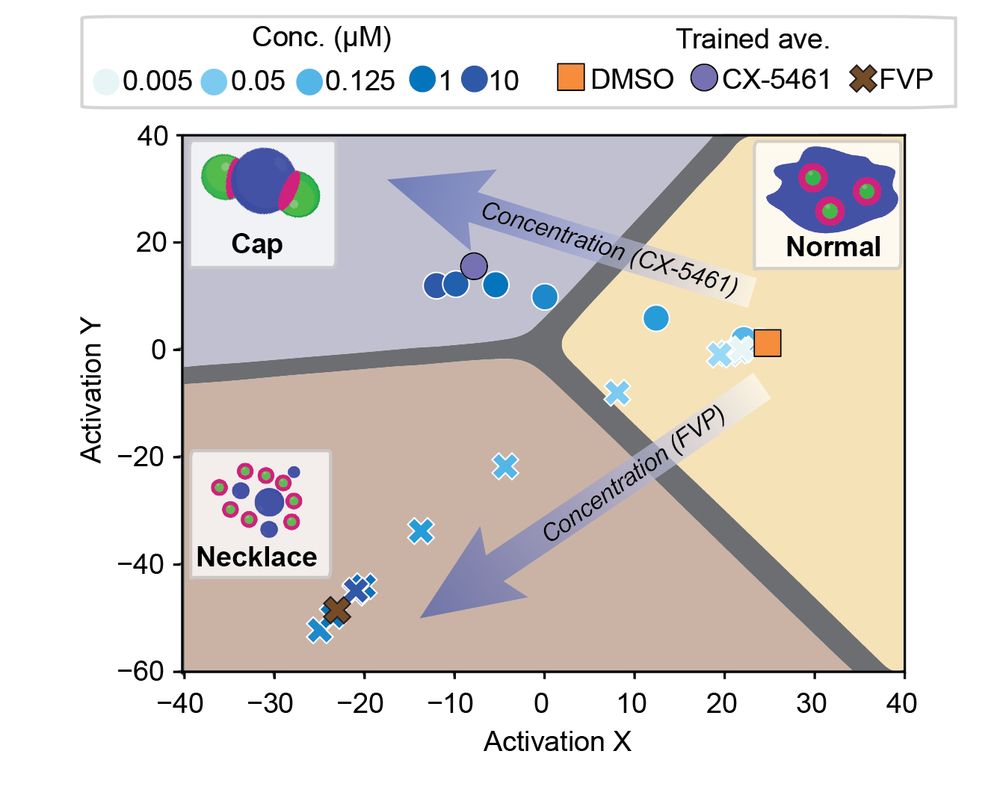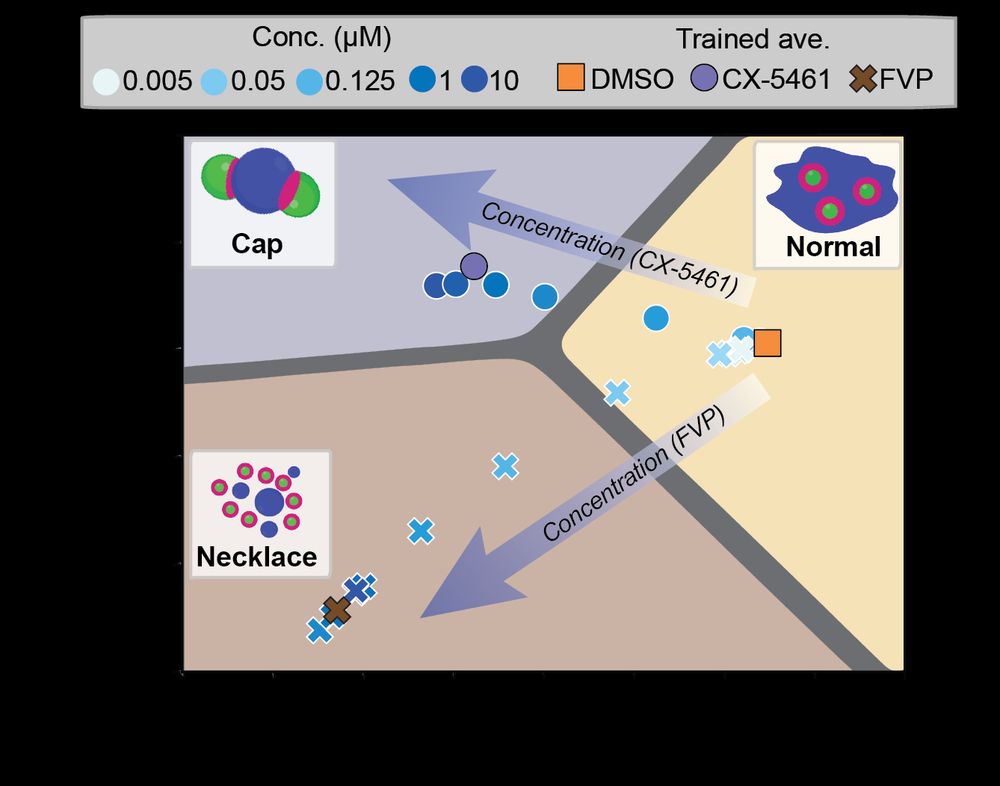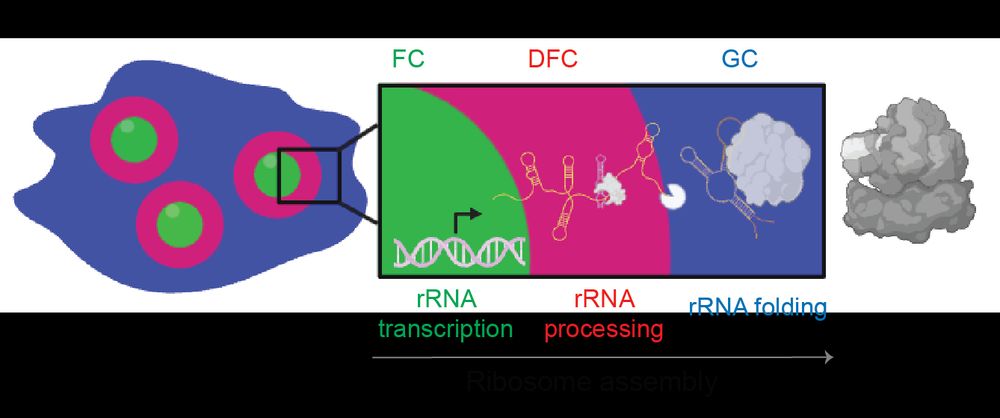
for a great help with the virus work, and Cliff @brangwynnelab.bsky.social for all the support and guidance!
for a great help with the virus work, and Cliff @brangwynnelab.bsky.social for all the support and guidance!
✔️ Condensate morphology encodes function
✔️ Deep-Phase translates images into quantitative readouts of drug biochemical potency
✔️ Future applications: phenotypic screens, MoA studies, biomarkers, single-cell heterogeneity detection (10/10)
✔️ Condensate morphology encodes function
✔️ Deep-Phase translates images into quantitative readouts of drug biochemical potency
✔️ Future applications: phenotypic screens, MoA studies, biomarkers, single-cell heterogeneity detection (10/10)








✔️ Condensate morphology encodes function
✔️ Deep-Phase translates images into quantitative readouts of drug biochemical potency
✔️ Future applications: phenotypic screens, MoA studies, biomarkers, single-cell heterogeneity detection
(10/10)
✔️ Condensate morphology encodes function
✔️ Deep-Phase translates images into quantitative readouts of drug biochemical potency
✔️ Future applications: phenotypic screens, MoA studies, biomarkers, single-cell heterogeneity detection
(10/10)









